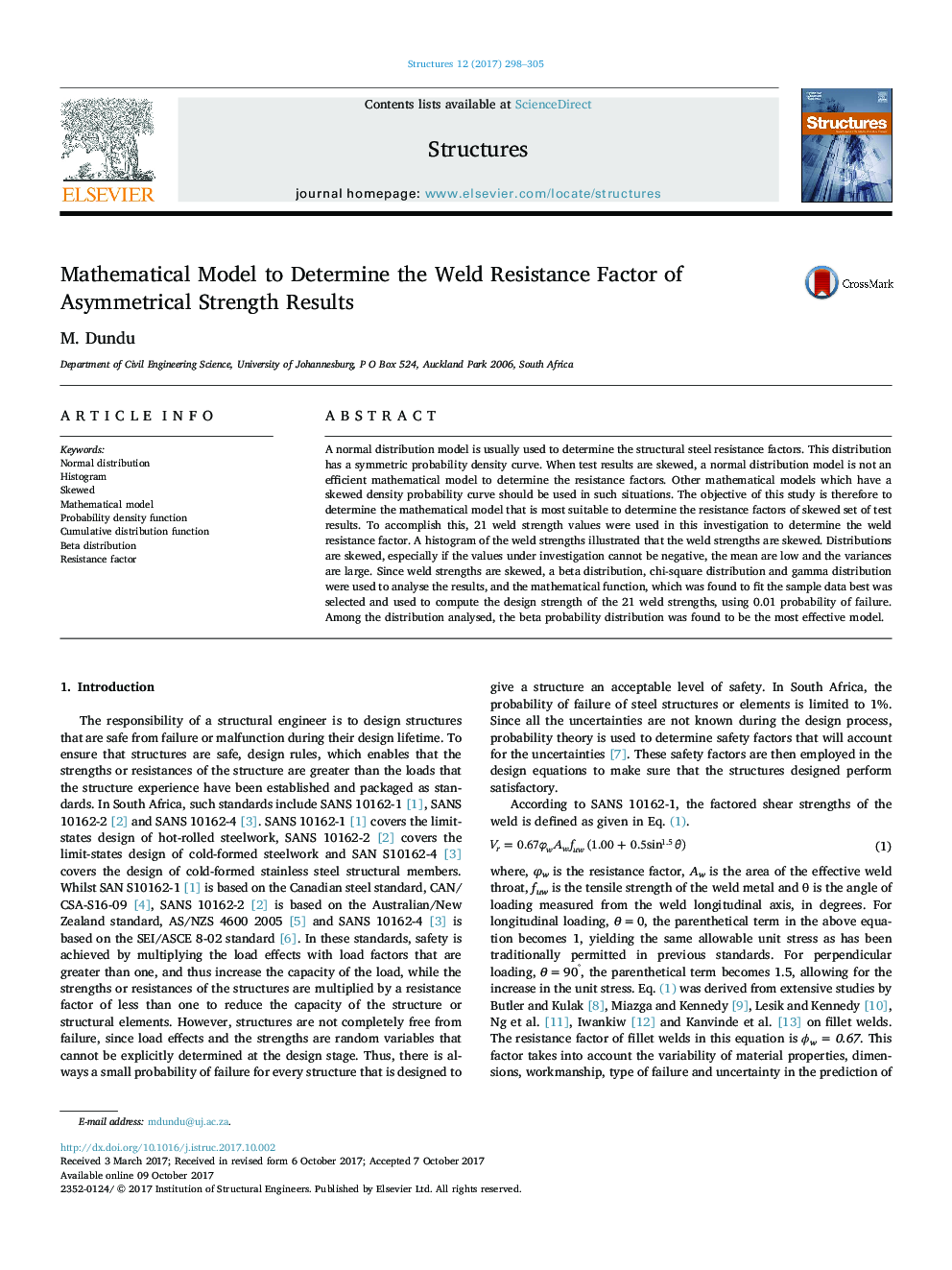| Article ID | Journal | Published Year | Pages | File Type |
|---|---|---|---|---|
| 4927866 | Structures | 2017 | 8 Pages |
Abstract
A normal distribution model is usually used to determine the structural steel resistance factors. This distribution has a symmetric probability density curve. When test results are skewed, a normal distribution model is not an efficient mathematical model to determine the resistance factors. Other mathematical models which have a skewed density probability curve should be used in such situations. The objective of this study is therefore to determine the mathematical model that is most suitable to determine the resistance factors of skewed set of test results. To accomplish this, 21 weld strength values were used in this investigation to determine the weld resistance factor. A histogram of the weld strengths illustrated that the weld strengths are skewed. Distributions are skewed, especially if the values under investigation cannot be negative, the mean are low and the variances are large. Since weld strengths are skewed, a beta distribution, chi-square distribution and gamma distribution were used to analyse the results, and the mathematical function, which was found to fit the sample data best was selected and used to compute the design strength of the 21 weld strengths, using 0.01 probability of failure. Among the distribution analysed, the beta probability distribution was found to be the most effective model.
Keywords
Related Topics
Physical Sciences and Engineering
Engineering
Civil and Structural Engineering
Authors
M. Dundu,
